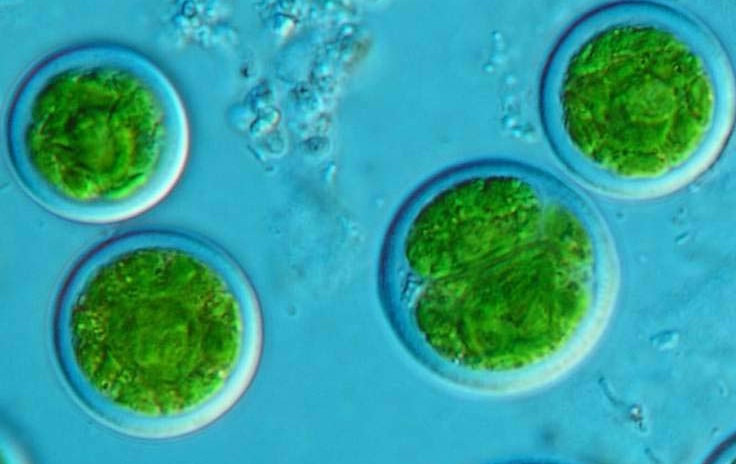In my last biology class, many years ago, I learned that there were two kingdoms of living things—plants and animals. Oh how wrong that thinking was. Life is so much richer than just plants and animals. Today scientists divide living things into three domains—archaea, bacteria, and eucarya–and then things get complicated. Eucarya (multicelled organisms) divide into five kingdoms, not two. The more scientists learn about the diversity of life on earth, the more categories they have to come up with. Much of this discovery is the result of studying microorganisms in the soil.
The tiniest organisms on Owl Acres may be the viruses that live in the soil. A virus is basically a piece of DNA or RNA with a protein covering. The virus is designed to latch onto a specific species of host cell and invade it. We’ve heard plenty about viruses these days as we struggled through the Covid years. Viruses invade everything from bacteria to humans. In the soil, any given virus will find its particular host. It can’t infect any other host. A certain type of virus will attack a bacteria cell, move in and use the bacteria to replicate itself. Another type of virus will invade a fungus. But the bacteria virus can’t attack the fungus.
Another type of soil organism is called Archaea (the same root as archaic). Discovered as recently as 1977, these single-celled organisms are known to live in extreme places such as volcanic vents, salt marshes, hot sulfur springs, deep sea vents and the rumen of cattle. They also live in the soil just about everywhere including on Owl Acres. They are similar to bacteria in that they are single-celled organisms, but they have vastly different capabilities and genetics. They seem to have a great deal to do with all the chemistry that goes on in the soil. For example, several known species are able to fix carbon dioxide using the energy they get from oxidizing inorganic materials. They may play a major role in carbon and nitrogen cycles.
Bacteria are single-celled organisms, too. They have adapted to live just about everywhere. Bacteria in the soil are thought to contain more carbon and nitrogen than all the plants on the surface of earth. Both archaea and bacteria produce enzymes that catalyze nearly every biochemical reaction that scientists have studied. They have made monumental changes to earth as a result. Cyanobacteria, for instance, began releasing oxygen into the atmosphere over two billion years ago as a bi-product of photosynthesis. Over time, the bacteria released enough oxygen into the atmosphere to allow the evolution of other forms of life.
Fungi are another kingdom of micro-organisms that populate the soil. An estimated 1.5 million different species of fungi live in the soil around the world. With so many types, you can imagine what astounding diversity there is in the kingdom of fungi. Examples include fungi that eat sugar and decaying matter; fungi that cause disease in plants or animals; fungi that produce antibiotics; fungi that connect plants through their roots and maintain symbiotic relationships benefiting both the fungus and the plant; fungi that join algae, other fungi and bacteria to form lichens; fungi that decompose manure; and carnivorous fungi that capture prey like nematodes in webs, cover them with digestive juices and then absorb the result.
Algae are another world of micro-organisms living under my feet. We think of them growing in water, but several hundred species of algae have been identified, living in the top layers of soil. Green and yellow-green algae capture sunlight through photosynthesis. Alone or in symbiotic relationships in lichens, algae are known for covering bare surfaces like volcanic or desert soil, rock faces and some less austere surfaces such as logs. On Owl Acres, we don’t have any bare rock or volcanic or desert soils, but we do have rotting logs.
You’d need a good microscope to find all these micro-organisms in the soil on Owl Acres. There are at least a billion of them in one teaspoon of topsoil representing at least ten thousand different species. And here I thought it was all just dirt!
Photo by Miguel Verona. Alt text: Photo through a microscope of Trebouxia, one of the green algae. Circles filled with green chlorophyll, floating in a blue field. Found everywhere, trebouxia is a major photo synthesizer in the soil, in water and as a symbiont with fungus in lichens.
